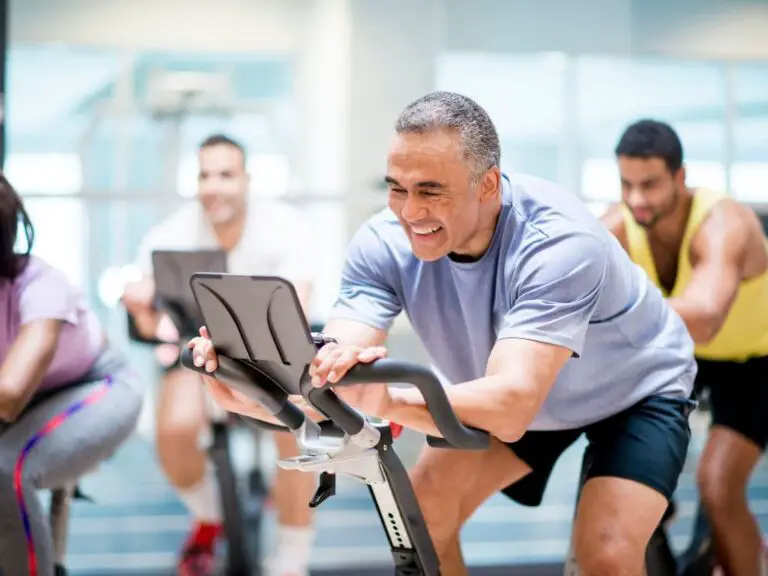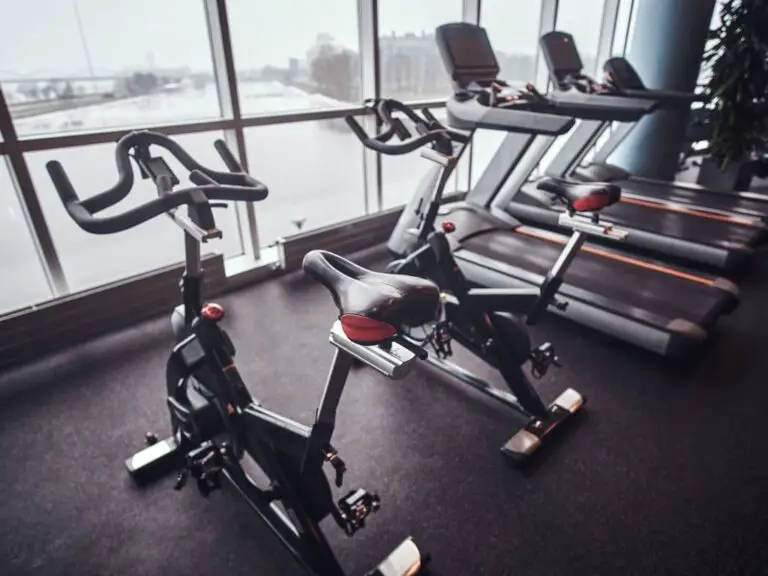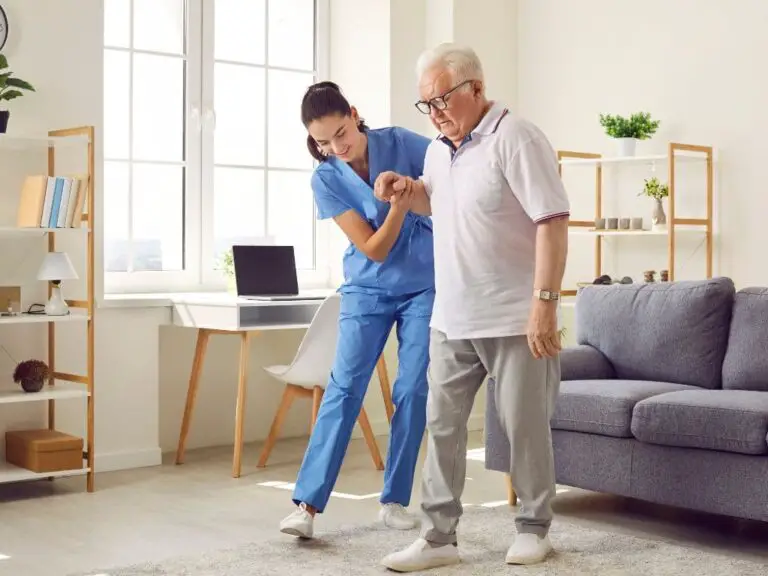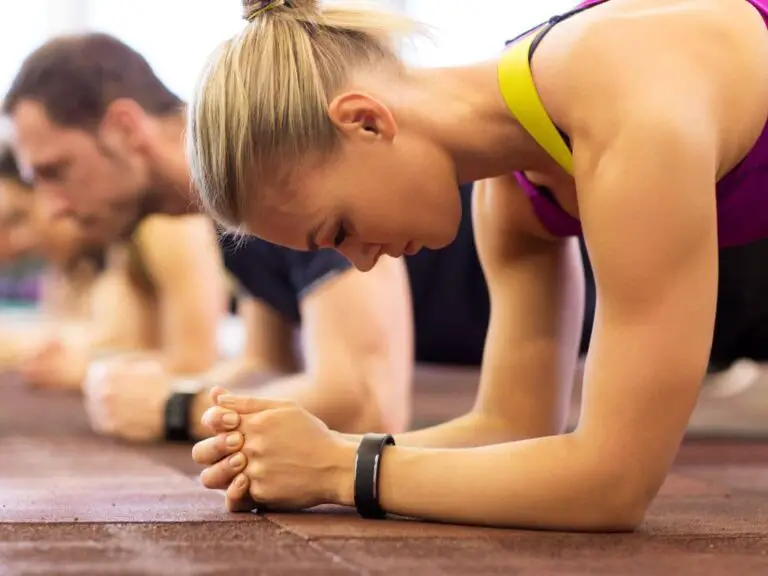Can You Build Muscle Mass at Age 70?
As we age, muscle mass naturally decreases due to a variety of factors. This age-related loss of muscle mass is referred to as sarcopenia. Sarcopenia can start as early as age 30, with more rapid declines after age 60. By age 70, adults can lose up to 15% of their muscle mass per decade.
Can you build muscle mass at age 70? Yes, it is possible to build muscle mass at age 70 and beyond. Implementing regular strength training exercises, consuming a balanced diet rich in protein, and allowing sufficient time for rest and recovery are crucial for muscle growth. Activities that build balance and mobility, like bodyweight exercises, can help in maintaining muscle mass, enhancing strength, and promoting overall health in older adults.
Maintaining muscle mass as you age is crucial for overall health and wellbeing. Muscle mass impacts:
- Strength and mobility – Muscles allow us to move, lift objects, and perform daily activities. Loss of muscle mass leads to feeling weaker, increased risk of falls and frailty.
- Calorie burning – Muscle is metabolically active tissue that burns calories. Loss of muscle decreases resting metabolism, making it easier to gain fat.
- Bone health – Muscles pull on bones, stimulating bone-building cells. Loss of muscle mass can increase bone loss.
- Disease risk – Loss of muscle mass is linked to higher risks of chronic diseases like diabetes and heart disease.
Building muscle mass, through exercise and proper nutrition, can help counteract age-related muscle loss.
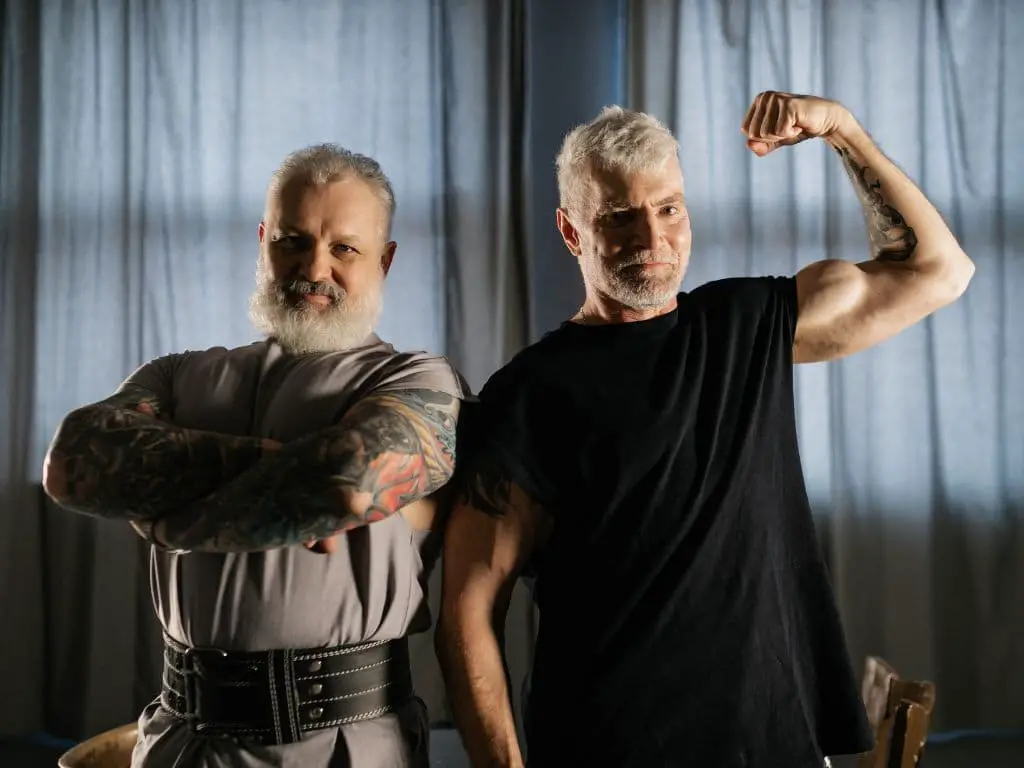
The Science Behind Muscle Mass Gain
To understand how to build muscle, it helps to understand how muscles grow at a cellular level. Here are some key points:
- Muscle protein synthesis – This is the process where muscle fibers repair and grow bigger and stronger after exercise. Protein needs to be available to synthesize new muscle.
- Myosin heavy chain – This is a key protein in muscle fibers. The type of myosin (I, IIa, IIx) helps determine if a fiber is slow or fast twitch.
- Fast vs slow twitch – Fast twitch fibers contract faster and are better for strength/speed. Slow twitch are more resistant to fatigue. We have a mix, but fast twitch tend to decline earlier.
- Satellite cells – These are stem cells in muscle that fuse to muscle fibers, helping them regenerate and grow in size/number in response to exercise. Their number decreases with age.
- Hormones – Testosterone, growth hormone and IGF-1 levels all decrease with age, making muscle building harder. Proper nutrition and exercise can help counteract this.
Understanding these systems allow us to develop smart exercise and diet approaches to build muscle as we age.
The Role of Exercise in Building & Maintaining Muscle Mass
Exercise, especially strength training, is essential for building and maintaining muscle mass at any age. Key points:
- Progressive resistance training is key – slowly increasing the weight/load/intensity over time forces muscles to adapt and grow larger and stronger
- Focus on both upper and lower body exercises to build muscle across all the major muscle groups. Squats, lunges, presses, rows, curls etc.
- Aim for 2-3 days per week of strength training. Allow for proper rest and recovery between sessions.
- Lift challenging weights – enough intensity to fatigue muscles in 8-12 reps. But maintain proper form to avoid injury.
- Bodyweight exercises like push ups, planks, and squats are effective and require minimal equipment.
- Include balance training to improve stability and prevent falls.
- Stretching, yoga, cardio, and walking are great, but not as effective for building mass as progressive overload strength training.
Prioritizing regular strength training is key to gaining and preserving muscle as you age. Consult a trainer to learn proper technique.
Sarcopenia, Balance and Independence—Fighting Age-Related Muscle Mass Loss
Sarcopenia, age-related muscle loss, can be combated through exercise and diet. Building muscle mass can help:
- Improve strength and mobility for daily tasks like rising from a chair, climbing stairs, carrying groceries etc.
- Reduce falls risk – stronger muscles improve balance and stability
- Increase independence – retaining strength keeps older adults self-sufficient longer
- Improve quality of life – staying active and strong makes all activities easier and more enjoyable
- Aid chronic disease management – helps control blood sugar, cholesterol, body composition
- Support bone health – stressing bones through strength training improves bone density
Prioritizing muscle-building exercise and protein intake, even later in life, can slow muscle loss. Seniors who remain active have better functional abilities.
Strength Training for Seniors
Strength training provides the most direct method to build muscle mass at any age. Here are some tips:
- Use resistance bands, dumbbells, machines or bodyweight
- Target all major muscle groups – legs, hips, back, chest, shoulders, arms, core
- 2-3x per week, allow for rest days in between
- 1-3 sets of 8-12 reps per exercise
- Focus on proper form – avoid straining or holding breath
- Use a spotter if needed for safety, especially when lifting heavy
- Allow for longer warm-ups/cooldowns before and after
- Progress slowly – increase weight or intensity over time
- Adjust workouts based on injuries/conditions – avoid aggravating joints
- Stay hydrated and fuel muscles with protein and carbs
Strength training is safe and effective when done properly. Consult a trainer to learn modifications if needed. Be patient and build gradually.
Nutrition for Building Muscle Mass at Age 70
Proper nutrition provides the building blocks for muscle growth and repair. Key diet tips:
- Eat 0.5-1.0 g of protein per pound of bodyweight daily. From lean meats, dairy, eggs, protein powder.
- Consume a post-workout protein shake or meal to maximize building and recovery.
- Eat complex carbs like whole grains to fuel workouts and provide energy.
- Include healthy fats like nuts, seeds, olive oil for energy and hormone production.
- Stay hydrated – drink water before, during and after exercise.
- Take a multivitamin containing Vitamin D and calcium for bone and muscle health.
- Reduce inflammation with fruits, vegetables, fish oil.
- Avoid excessive salt, sugar and processed foods that can cause inflammation.
Proper nutrition combined with strength training allows for optimal muscle building, even into old age. Time nutrients around workouts for best results.
Role of Rest and Recovery in Gaining Muscle Mass
While strength training does the work of building muscle, adequate rest and recovery are also crucial.
- Muscle protein synthesis occurs both during exercise and for 24-48 hours after a workout. Good nutrition accelerates this process.
- Allow for at least 1 full rest day between intense sessions to avoid overtraining. Muscles grow during rest.
- Sleep for 7-9 hours per night supports muscle recovery. Growth hormone is released during sleep.
- Include light cardio/yoga on non-strength days to boost blood flow without overtaxing muscles.
- Massage, foam rolling, hot/cold therapy can help speed muscle recovery too.
- Allow for longer warmups and cooldowns before and after exercise as you age.
- Listen to your body – reduce frequency if constantly sore or fatigued.
- Stay hydrated and eat anti-inflammatory foods.
Rest days are as important as training days. Support muscles with sleep, nutrition, and smart recovery strategies.
Bodyweight Exercises for Seniors
Bodyweight exercises utilize your own weight as resistance to build muscle. Beneficial for seniors because they require no equipment and can be done anywhere. Examples include:
Upper Body
- Push ups
- Plank shoulder taps
- Tricep dips
- Wall push ups
Lower Body
- Squats
- Lunges
- Calf raises
- Side leg raises
Core
- Plank
- Side plank
- Bird dogs
- Bridge
Aim for 8-15 reps, 2-3 sets. Modify exercises by reducing range of motion if needed. Can increase difficulty by elevating feet or wearing a backpack. Consult a trainer to learn proper form. Bodyweight training helps maintain strength.
The Link Between Bone Health and Exercise
Building muscle goes hand in hand with building strong bones. Exercises that strengthen muscles also stimulate bone growth.
- Weight-bearing exercises – where you work against gravity – are best. Walking, strength training, tai chi.
- High impact activities like running or jumping can be hard on joints. Focus on strength training.
- Exercises that challenge balance and coordination also improve bone density.
- Good forms of cardio for bone health include elliptical machines, swimming or cycling. Low impact.
- Include exercises that target areas prone to osteoporosis like the hips and spine – squats, rows, back extensions.
- Adequate protein, calcium and Vitamin D intake also support bone health.
- Those with osteoporosis may need modified exercises to avoid fractures. Consult a doctor.
Building muscle and bone density together improves mobility, posture and vitality.
Overcoming Barriers to Exercise for Seniors
Many older adults face barriers when trying to exercise regularly. Here are some common obstacles and solutions:
Lack of motivation
- Focus on small, achievable goals – like walking 10 minutes a day
- Find an exercise buddy to stay motivated
- Track progress to see improvements
- Make it fun – dance to music or go on walks outdoors
Physical limitations
- Get guidance from a physical therapist or trainer
- Modify workouts based on ability and conditions
- Use lighter weights or do seated/assisted exercises
Fatigue or soreness
- Allow for rest days between sessions
- Do lighter cardio or stretching on off days
- Use ice, heat, or massage for muscle soreness
Lack of time
- Schedule workouts into your day like appointments
- Do short 10-15 minute bodyweight sessions
- Multitask – strength exercises while watching TV
Access to equipment
- Use resistance bands, household items, or go to a nearby gym
- Bodyweight workouts require no equipment
Staying active requires adapting your workouts to your abilities and lifestyle. But the benefits – like maintaining independence – make it worthwhile.
The Future of Fitness: Aging and Exercise
The effects of sarcopenia can be combated by making exercise a priority at any age. It’s never too late to start. With strength training and proper nutrition, muscle lost due to aging can be rebuilt, preserving strength, mobility and vitality into old age.
If you are aged 65+ and have not exercised regularly before, consult a medical professional before beginning an exercise routine. Start slowly and focus on safety, form and gradual progression. Nutrition also plays a key role – time protein intake and carbohydrate fueling around workouts.
The future of healthy aging involves seniors staying strong and active through safe, personalized exercise programs. The benefits of building muscle go far beyond aesthetics – they can improve quality of life and independence for decades to come.
Frequently Asked Questions
-
Can a 70 year old gain muscle mass?
Seniors can still bulk up on muscle by pressing iron. As we age, our muscle mass drops at astonishing rates. Researchers found that lifting weights can help people over 50 not only preserve but even increase muscle mass.
-
How much water should an 80 year old drink?
According to experts, older adults should consume no less than 1.7 liters per day. That’s 57.5 fluid ounces or 7.1 cups.
-
How long will it take to walk 5 miles?
It takes an average of 1 hour 40 minutes to complete 5 miles. This can vary depending on how fast you walk. According to the British Heart Foundation, an average speed for walking is about 3 miles per hour. This is 20 minutes per mile (or 12 minutes per kilometer).
-
What causes lack of sleep in elderly?
Insomnia in elderly people is caused by physiologic changes, environment conditions and chronic diseases. In the elderly, sleep disturbances are associated with impaired function, memory loss, poor concentration and decreased performance.
-
Is peanut butter good for elderly?
Peanut butter is rich in beneficial fats and magnesium. It also contains proteins, which provide seniors with sustained energy throughout the day. Vitamin E and B6 are also beneficial to brain health. They may prevent blood clots from vascular damage.
-
What is the best fruit for older people?
Vitamin C is found in many foods, including citrus fruits, vegetables and greens.
-
How can a 68 year old build muscle?
For older adults, strength training is key to muscle growth. This is best done slowly and with lighter weights. Your muscles will work harder if you move slowly with lighter weights. You don’t need a set weight to do resistance exercise like push-ups or squats if you don’t have any.
-
Which milk is best for elderly?
No matter your age, drinking milk can be beneficial to your health. The best source of vitamin D and calcium is milk. It helps maintain muscle strength and bone health, as well as prevent osteoporosis. For the elderly, however, it is best to choose low-fat or nonfat milk.
-
Are hard boiled eggs good for seniors?
Eggs can be inexpensive and readily available, and they are a good source of protein of high quality. They also contain significant amounts of leucine which is an essential amino acid for muscle synthesis.
-
What is the healthiest cereal you can buy at the grocery store?
Fiber One Original Breakfast Cereal is sugar-free and filling. It also contains 65 percent of the daily recommended fiber. You will also find it very low in calories, and even lower in fat.
-
Why do old people wake up so early?
A person’s circadian rhythm shifts by approximately half an hour every decade starting in middle-age. This is partly due to the fact that as we age, our bodies produce less melatonin which makes us wake up earlier.
-
What foods help muscle atrophy?
You have many options: fruits, vegetables, whole grains and plain yogurt. They can also be low in added sugar and contain acceptable levels of fiber. Good fats, such as omega-3 fats, are important to prevent muscle breakdown by interfering in the inflammation process.
-
Is honey good for seniors?
Boosts Gastrointestinal health Honey may also be beneficial for those with ulcers and other gastrointestinal problems. Probiotics (also known as good bacteria) can be found in honey. This is especially true for senior citizens who are taking medications to reduce their gut flora.
-
Is 20 minutes of strength training enough?
For your overall fitness and health, you should still get 150 minutes of moderate-to-vigorous exercise per week. This averages to around 20 minutes per day. The bottom line is that a few minutes of intense exercise can be better than none and have lasting, real benefits.
-
Is it better to walk faster or longer?
It all boils down to this: The results show that walking faster than slow, average or fast may have a greater impact on long-term health and longevity, especially for seniors.

